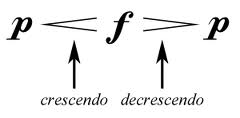Dynamic signs are symbols found throughout your music that tells us the volume, or how loud or soft the music should be played. You will find most of these musical terms written in the Italian Language. Why is that? Italian composers were some of the first people to include “volume instructions” in their music.
Here are some of the most used dynamic signs:
Italian Sign English
pianissimo pp very soft
piano p soft
mezzo piano mp moderately soft
mezzo forte mf moderately loud
forte f loud
fortissimo ff very loud
When we arrange them in the order of softest to loudest, it looks like this:
pp, p, mp, mf, f, ff
A Gradual Change in Dynamics
We also have symbols that are used for demonstrating a gradual change in volume. The symbols we use for this are crescendo (gradually getting louder) and decrescendo or diminuendo (gradually getting softer). The terms decrescendo and diminuendo mean the same thing and are used interchangeably.
Where the two lines are closest together in the wedge-looking symbols indicates the softest point. As the lines get further apart, the musician sings or plays the music by gradually getting louder.
You can also see dim. and decresc. that is short-hand for gradually getting softer and cresc. that is short for gradually getting louder. Many times composers will place these “word symbols” in the music instead of the usual wedge-shaped symbols.
Not An Exact Science
It is important to know that dynamics are relative and not an exact science. Every voice and instrument can produce varying degrees of volume. We can express a full range of dynamics that may not be in exactly the same way as someone else. That would be almost impossible and no longer a unique experience.
What’s Important About Dynamics
The most important thing to learn about dynamics is however you start playing loud or soft is how much room you have left to get louder or softer. So, if you start too loud, you won’t have a lot of room to get louder and will not make a contrast in dynamics successfully. On the same token, if you start too soft and need to get softer, you have nowhere to go to make that difference.
The softer you start on a crescendo, the more intense the volume increase will appear when you gradually get louder. In the same way, if you start plenty loud on a decrescendo, then you will have lots of opportunity to get softer and thrill the audience (and even yourself!).
Key point: Never start too soft or too loud on crescendos or decrescendos. You will have nowhere to go. If I do, what will be the result? It will end up being a very boring performance with everything sounding mundane and the same.
Why do we have Dynamics?
Dynamics bring so much life to the music. Without them, everything would sound dull and lifeless. Everything in nature and life around us naturally has changes in volume levels.
If everything was the same volume intensity, we would probably get so used to hearing it that we would ignore it. This is not a good thing for emergency crews that need to get your attention to move out of the way. (Ever notice how the volume and intensity of the sirens keep changing?)
A good quality performance will make full use of dynamics. It can really make the difference between an “okay” performance and something absolutely extraordinary. So, start taking note of the dynamic signs in your music and do some experimenting. Sometimes you have to play around with it a little bit before you get what you want.


I find the tips about dynamics very useful.
Does the dynamics sign apply to the measure it is in, or the phrase, or until another dynamic sign?